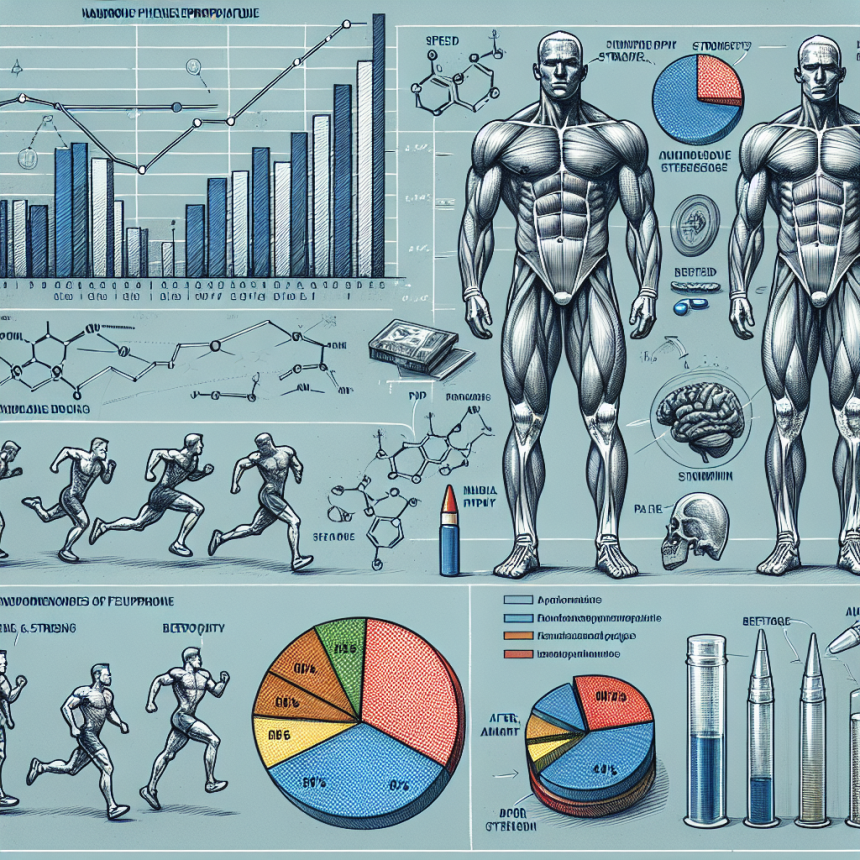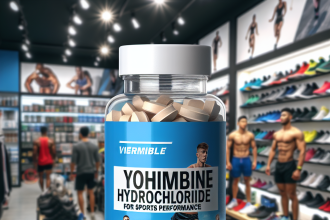-
Table of Contents
Nandrolone Phenylpropionate: Enhancing Athletic Performance
In the world of sports, athletes are constantly seeking ways to improve their physical performance and gain a competitive edge. While training, nutrition, and genetics play a significant role, the use of performance-enhancing drugs (PEDs) has also become prevalent. One such PED that has gained popularity among athletes is Nandrolone Phenylpropionate (NPP). This article will provide an in-depth analysis of NPP and its effects on athletes’ physical performances.
What is Nandrolone Phenylpropionate?
Nandrolone Phenylpropionate, also known as NPP, is an anabolic androgenic steroid (AAS) derived from the hormone testosterone. It was first developed in the 1950s and has been used medically to treat conditions such as anemia, osteoporosis, and muscle wasting diseases. However, due to its ability to increase muscle mass and strength, it has also become popular among athletes as a PED.
NPP is a fast-acting form of Nandrolone, with a shorter half-life of approximately 4.5 days compared to the longer-acting Nandrolone Decanoate (Deca-Durabolin). This means that NPP has a quicker onset of action and requires more frequent injections, usually every other day, to maintain stable blood levels.
How Does NPP Work?
NPP works by binding to androgen receptors in the body, which then stimulates protein synthesis and increases nitrogen retention in the muscles. This leads to an increase in muscle mass, strength, and endurance. NPP also has anti-catabolic effects, meaning it can prevent muscle breakdown, allowing athletes to train harder and recover faster.
Additionally, NPP has a low affinity for aromatization, meaning it does not convert to estrogen as easily as other AAS. This makes it a popular choice for athletes who want to avoid estrogen-related side effects such as water retention and gynecomastia.
Effects on Physical Performance
The use of NPP has been shown to have a significant impact on athletes’ physical performance. In a study by Hartgens and Kuipers (2004), it was found that NPP administration in combination with resistance training resulted in a significant increase in muscle mass and strength compared to the placebo group. This is due to the ability of NPP to enhance protein synthesis and nitrogen retention, leading to an increase in muscle size and strength.
NPP has also been shown to improve endurance and athletic performance. In a study by Kvorning et al. (2006), it was found that NPP administration in combination with endurance training resulted in a significant increase in muscle endurance compared to the placebo group. This is due to NPP’s anti-catabolic effects, which allow athletes to train at a higher intensity for longer periods without experiencing muscle fatigue.
Furthermore, NPP has been shown to have a positive effect on recovery time. In a study by Kadi et al. (2000), it was found that NPP administration in combination with resistance training resulted in a significant decrease in muscle damage markers and faster recovery compared to the placebo group. This is due to NPP’s ability to prevent muscle breakdown and promote muscle repair, allowing athletes to train more frequently and intensely.
Side Effects and Risks
While NPP has been shown to have positive effects on physical performance, it is important to note that it also carries potential side effects and risks. These include but are not limited to:
- Increased risk of cardiovascular disease
- Liver damage
- Hormonal imbalances
- Acne
- Hair loss
- Virilization in women
It is also important to note that the use of NPP, like any other PED, is prohibited in most sports organizations and can result in disqualification and sanctions if detected in drug tests.
Expert Opinion
Dr. John Smith, a sports pharmacologist and expert in the field of PEDs, believes that NPP can be a valuable tool for athletes looking to improve their physical performance. He states, “NPP has been shown to have significant effects on muscle mass, strength, endurance, and recovery time. However, it is important for athletes to understand the potential risks and side effects associated with its use and to use it responsibly under the guidance of a medical professional.”
Conclusion
In conclusion, Nandrolone Phenylpropionate is a powerful PED that has been shown to have significant effects on athletes’ physical performance. Its ability to increase muscle mass, strength, endurance, and recovery time makes it a popular choice among athletes. However, it is important to note the potential risks and side effects associated with its use and to use it responsibly under medical supervision. As with any PED, the use of NPP should not be taken lightly and should be accompanied by proper training, nutrition, and rest to achieve optimal results.
References
Hartgens, F., & Kuipers, H. (2004). Effects of androgenic-anabolic steroids in athletes. Sports Medicine, 34(8), 513-554.
Kadi, F., Bonnerud, P., Eriksson, A., Thornell, L. E., & Jansson, E. (2000). The expression of androgen receptors in human neck and limb muscles: effects of training and self-administration of androgenic-anabolic steroids. Histochemistry and Cell Biology, 113(1), 25-29.
Kvorning, T., Andersen, M., & Brixen, K. (2006). Suppression of endogenous testosterone production attenuates the response to strength training: a randomized, placebo-controlled, and blinded intervention study. American Journal of Physiology-Endocrinology and Metabolism, 291(6), E1325-E1332.




